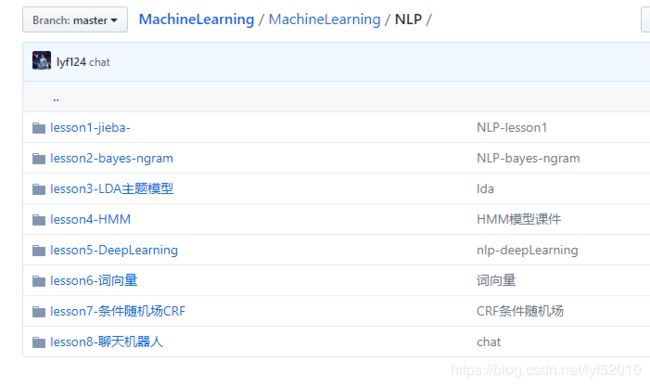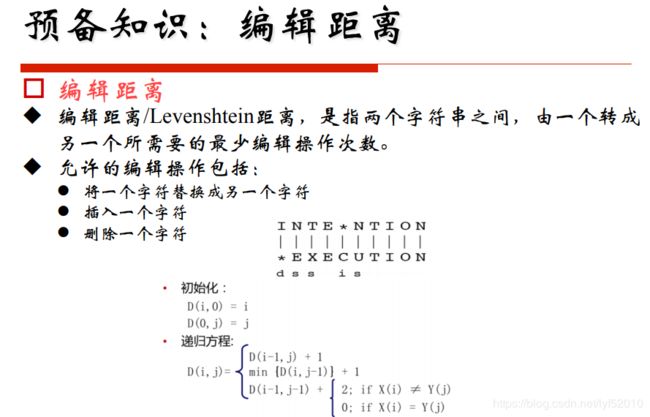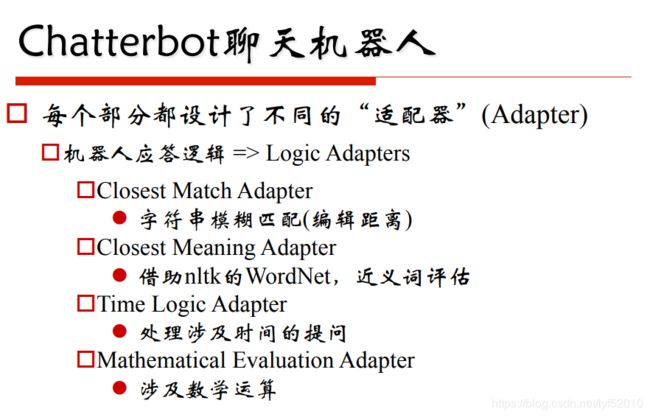NLP--(八)聊天机器人(一)
NLP资料PDF链接
升级II:
光是会BB还是不行,得有知识体系!才能解决用户的问题。
我们可以用各种数据库,建立起一套体系,然后通过搜索的方式,来查找答案。
比如,最简单的就是Python自己的graph数据结构来搭建一个“地图”。
依据这个地图,我们可以清楚的找寻从一个地方到另一个地方的路径,
然后作为回答,反馈给用户。
In [17]:
# 建立一个基于目标行业的database
# 比如 这里我们用python自带的graph
graph = {'上海': ['苏州', '常州'],
'苏州': ['常州', '镇江'],
'常州': ['镇江'],
'镇江': ['常州'],
'盐城': ['南通'],
'南通': ['常州']}
# 明确如何找到从A到B的路径
def find_path(start, end, path=[]):
path = path + [start]
if start == end:
return path
if start not in graph:
return None
for node in graph[start]:
if node not in path:
newpath = find_path(node, end, path)
if newpath: return newpath
return None
In [20]:
print(find_path('上海', "镇江"))
['上海', '苏州', '常州', '镇江']
同样的构建知识图谱的玩法,
也可以使用一些Logic Programming,比如上个世纪学AI的同学都会学的Prolog。
或者比如,python版本的prolog:PyKE。
他们可以构建一种复杂的逻辑网络,让你方便提取信息,
而不至于需要你亲手code所有的信息:
son_of(bruce, thomas, norma)
son_of(fred_a, thomas, norma)
son_of(tim, thomas, norma)
daughter_of(vicki, thomas, norma)
daughter_of(jill, thomas, norma)
升级III:
任何行业,都分个前端后端。
AI也不例外。
我们这里讲的算法,都是后端跑的。
那么, 为了做一个靠谱的前端,很多项目往往也需要一个简单易用,靠谱的前端。
比如,这里,利用Google的API,写一个类似钢铁侠Tony的语音小秘书Jarvis:
我们先来看一个最简单的说话版本。
利用gTTs(Google Text-to-Speech API), 把文本转化为音频。
In [4]:
from gtts import gTTS
import os
tts = gTTS(text='您好,我是您的私人助手,我叫小辣椒', lang='zh-tw')
tts.save("hello.mp3")
os.system("mpg321 hello.mp3")
Out[4]:
0同理,
有了文本到语音的功能,
我们还可以运用Google API读出Jarvis的回复:
(注意:这里需要你的机器安装几个库 SpeechRecognition, PyAudio 和 PySpeech)
In [2]:
import speech_recognition as sr
from time import ctime
import time
import os
from gtts import gTTS
import sys
# 讲出来AI的话
def speak(audioString):
print(audioString)
tts = gTTS(text=audioString, lang='en')
tts.save("audio.mp3")
os.system("mpg321 audio.mp3")
# 录下来你讲的话
def recordAudio():
# 用麦克风记录下你的话
r = sr.Recognizer()
with sr.Microphone() as source:
audio = r.listen(source)
# 用Google API转化音频
data = ""
try:
data = r.recognize_google(audio)
print("You said: " + data)
except sr.UnknownValueError:
print("Google Speech Recognition could not understand audio")
except sr.RequestError as e:
print("Could not request results from Google Speech Recognition service; {0}".format(e))
return data
# 自带的对话技能(rules)
def jarvis():
while True:
data = recordAudio()
if "how are you" in data:
speak("I am fine")
if "what time is it" in data:
speak(ctime())
if "where is" in data:
data = data.split(" ")
location = data[2]
speak("Hold on Tony, I will show you where " + location + " is.")
os.system("open -a Safari https://www.google.com/maps/place/" + location + "/&")
if "bye" in data:
speak("bye bye")
break
# 初始化
time.sleep(2)
speak("Hi Tony, what can I do for you?")
# 跑起
jarvis()
***************************************************************************************************************************************


